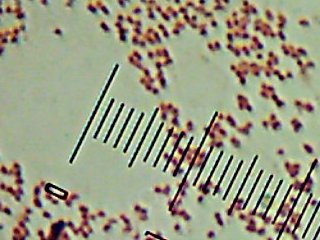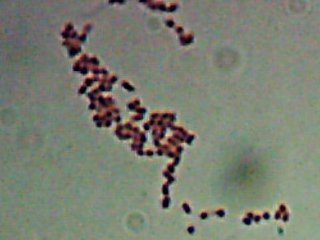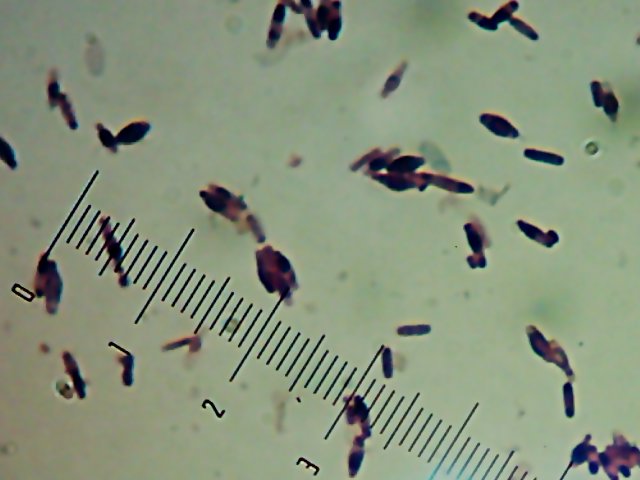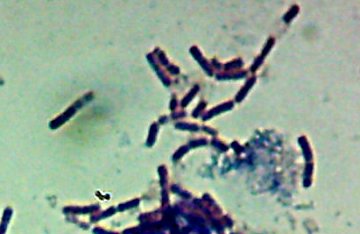No, that’s not the name of an obscure pair of mythological Greek characters. Nor do they really have much to do with microbiology, either, but they’re kind of interesting, now-obsolete scientific theories. And since I mentioned them both in the last post, I may as well say something about them.
It’s worth mentioning that being a “theory” is a big deal, scientifically. I means something that’s been examined and tested repeatedly and still appears to correctly describe and predict natural events.
Phlogiston seems really bizarre in a modern context. Phlogiston was supposed to be a sort of “fluid” that came out of things when they burned. It was invented to explain the observation that if you burn something in a sealed container, it will only burn so much and then stop, until you give it fresh air. The theory held that the air could only hold so much of the phlogiston, and when it was saturated with it (“phlogisticated”) it simply wouldn’t support combustion any more.
You can test this, of course. If this hypothesis is accurate, then if you have a lot of air but just a LITTLE bit of material that you burn in it, then the air will still be partly “dephlogisticated” and if you then add more fuel it, too, will still be able to burn. Naturally if you actually try this, that’s exactly what you see – the theory accurately predicted what would happen.
Of course, modern chemistry knows that what’s really happening is that oxygen in the air is combining with the fuel being burned – “stuff” is going from the air to the fuel. (That’s not the first time a popular scientific theory turned out to be exactly the opposite of correct.)As chemists did more experiments they were able to show more cases where phlogiston theory no longer predicted correctly, and it was abandoned.
Aether (I spell it that way rather than “ether” do better distinguish it from the modern meaning, which is used in organic chemistry) has to do with light. Leaving out all the historical details around it, since light seems to be a wave (okay, AND a particle, but never mind that for now), and since waves have to travel through some kind of medium (like sound travelling through air, or a wave travelling through water in the ocean), there must be some kind of “stuff” that light waves are going through, right? Well, that “stuff” was referred to as “luminiferous aether”.
This one is somewhat trickier, but basically, fancy experiments with lasers which ought to have shown some effects of “aether” if it existed didn’t show anything. I’m not a physicist, so I’ll stop here before I badly butcher an attempted explanation of what was tested and how it failed to demonstrate existence of “aether”. If you’re interested, the relevant experiment is the Michelson-Morley experiment. Of course, if the universe actually IS geocentric, then the test results merely demonstrate that the aether is fixed with respect to the Earth…
I’m not even going to attempt to explain the whole “it’s a wave AND at the same time it’s a particle” thing. It’s kind of like how Schroedinger’s Cat is both dead AND alive at the same time until somebody checks on it. I think to really explain it you have to fluently speak a specialized made-up nerd language because normal speech doesn’t seem to handle it very well…
Actually, in the unlikely but not impossible event that someday, a physicist happens to read this who can explain “wave-particle duality” comprehensibly using only plain English prose I’d be interested (I ‘get’ how light is both a wave and a particle simultaneously, I just don’t get why.)
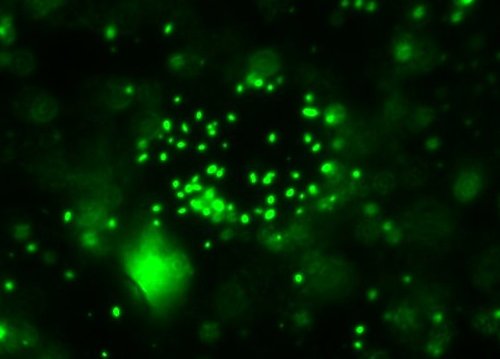
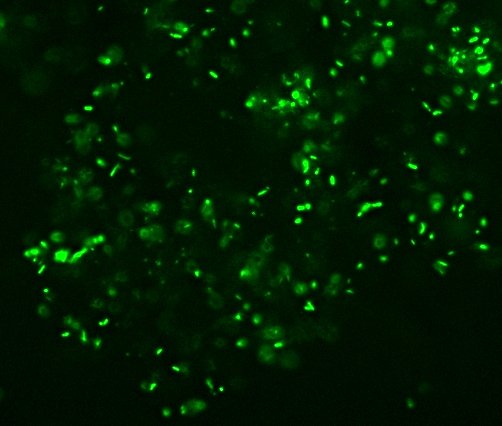



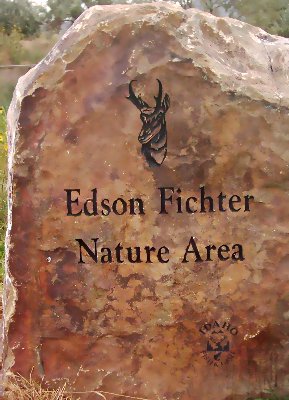
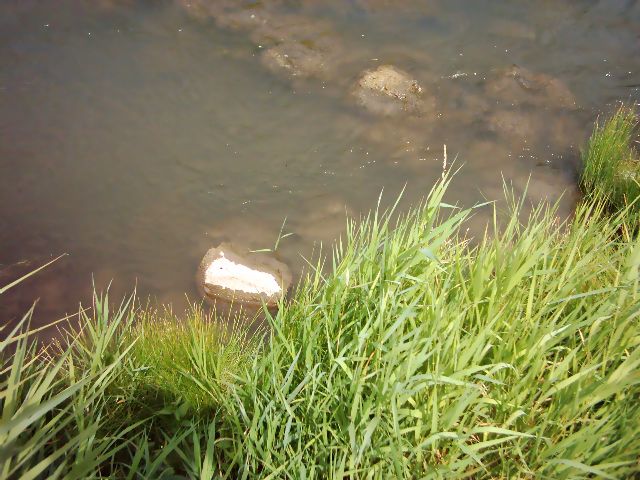
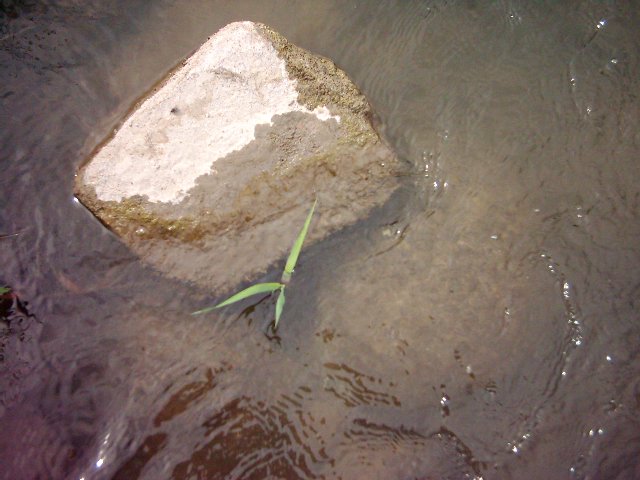
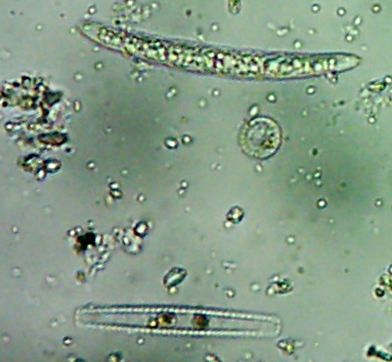




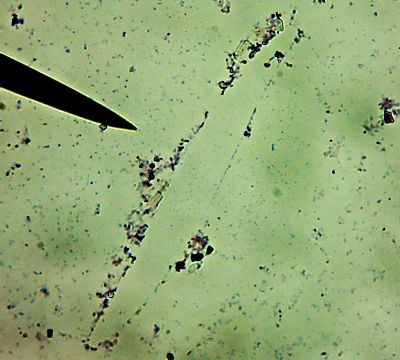 All right then, here, let me dry the sample out and heat fix it, then I’ll Gram Stain them for you.Wow. I guess soft, wet, squishy protozoal cell membranes don’t like being heat-fixed, do they? Ouch.
All right then, here, let me dry the sample out and heat fix it, then I’ll Gram Stain them for you.Wow. I guess soft, wet, squishy protozoal cell membranes don’t like being heat-fixed, do they? Ouch.
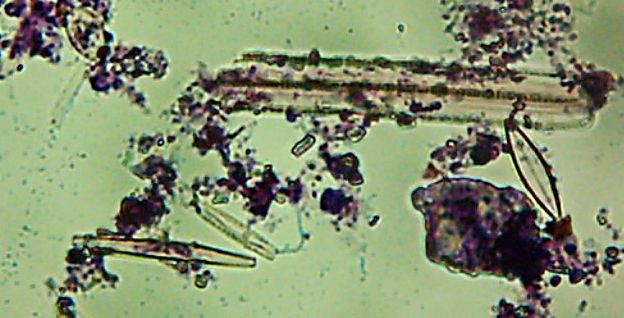 Okay, technically at least some of these things are diatoms rather than “protozoa“.
Okay, technically at least some of these things are diatoms rather than “protozoa“.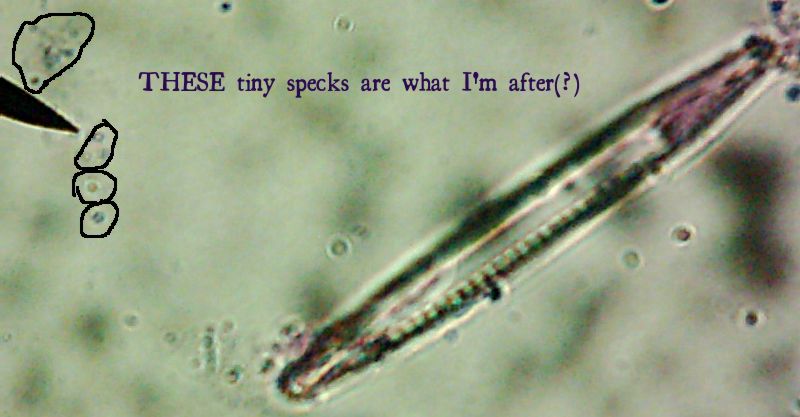 Now, months later, I’m still not sure how much of the debris on those original slides was bacteria and how much was just crud from the samples. I did, however, get pictures of the 10 isolates that I wanted to try to identify (and of which, as you know from
Now, months later, I’m still not sure how much of the debris on those original slides was bacteria and how much was just crud from the samples. I did, however, get pictures of the 10 isolates that I wanted to try to identify (and of which, as you know from 